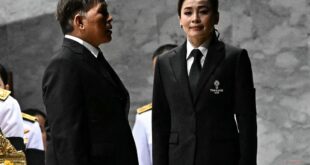Is Formula E a sport? An environmental initiative? A technological test bed for the automotive industry? Answer: all of the above.
When the all-electric racing series was launched in 2014, it seemed a quixotic venture. Diehard Formula 1 fans sneered at the idea. (It didn’t help that, for the first four years, drivers had to switch cars half-way through a 45-minute race because their batteries ran out.) Cynics also raised the age-old question: there may be a gap in the market for a new motorsport competition but is there a market in the gap?
It is a measure of how far Formula E has come, under the astute guidance of its Spanish founder Alejandro Agag, that one of the ambassadors for – and investors in – the new competition is Nico Rosberg, who beat Mercedes team-mate Lewis Hamilton to become Formula 1 world champion in 2016. Although he insists that Formula 1 remains “the ultimate gladiatorial motorsport”, Rosberg says Formula E is the “formula of the future”.
Ticket demand for the ePrix races (which take place in a host of iconic cities from Marrakech to Hong Kong and, next year, London) is soaring. Some corporate heavy hitters are getting involved, notably Bosch, DHL, Heineken and technology giant ABB, which paid $13.9m (£11m) for the main sponsorship rights. Automotive manufacturers, including Audi, Mercedes, Porsche and Volkswagen, have been eager to compete.
A key factor in the sport’s appeal to millennials is that its purpose extends beyond the track: Formula E is pioneering new technology to fight climate change. Ernst & Young predicts that the sport will help sell an additional 77 million electric vehicles worldwide by 2040, the equivalent of saving four billion barrels of oil.
Formula E’s leaders, notably chief marketing officer Jérôme Hiquet, have strengthened the sport’s bond with younger fans though social media, short-form content and, this season, a video game that enables fans to race drivers in real time. Hiquet’s figures suggest the strategy is working: fans in the 13-24 age group account for 49 per cent of engagement on its Facebook page.
An off-road, all-electric series, Extreme E, will start in January 2021. Although the organisers have tried to minimise the carbon footprint – by, for example, renovating the former Royal Mail ship St Helena to provide an operational base – the visual spectacle of vehicles racing across the Arctic or Himalayas conflicts with the eco-friendly ethos that has given the sport its distinctive purpose.
The organisers’ shorthand description for the new series – “Blue Planet meets Dakar” – sounds paradoxical at best and, at worst, like an oxymoron.
Image credit: Photo by Digital Buggu from Pexels
Source link

